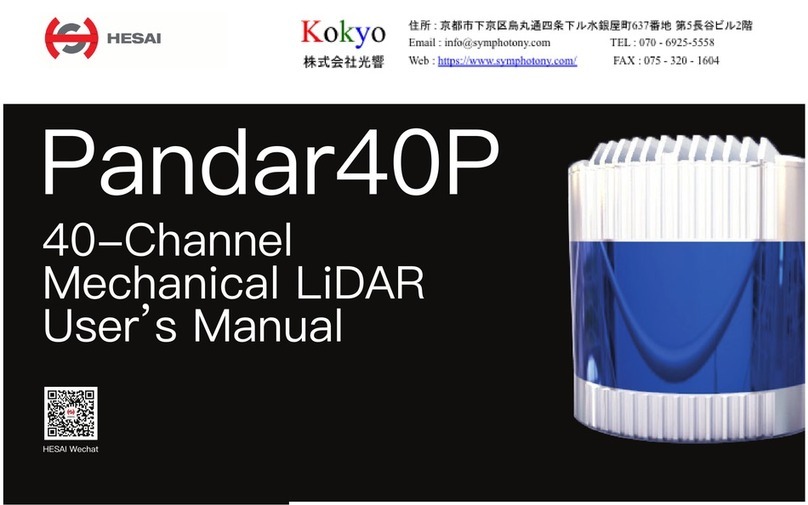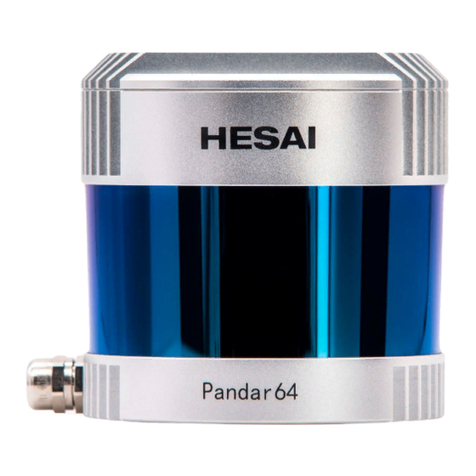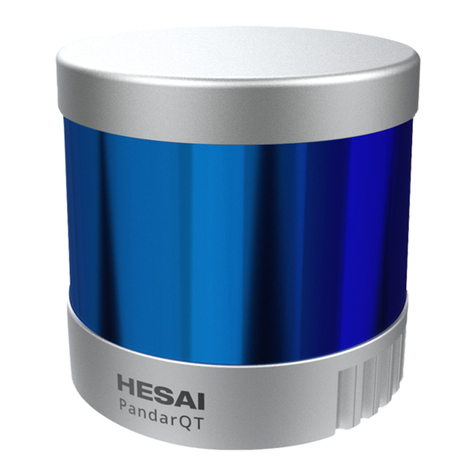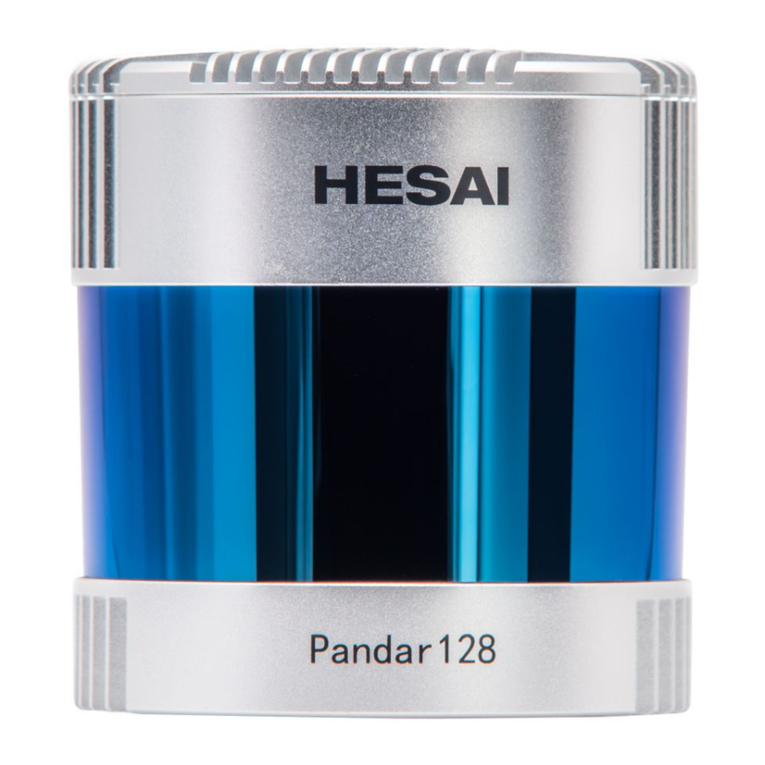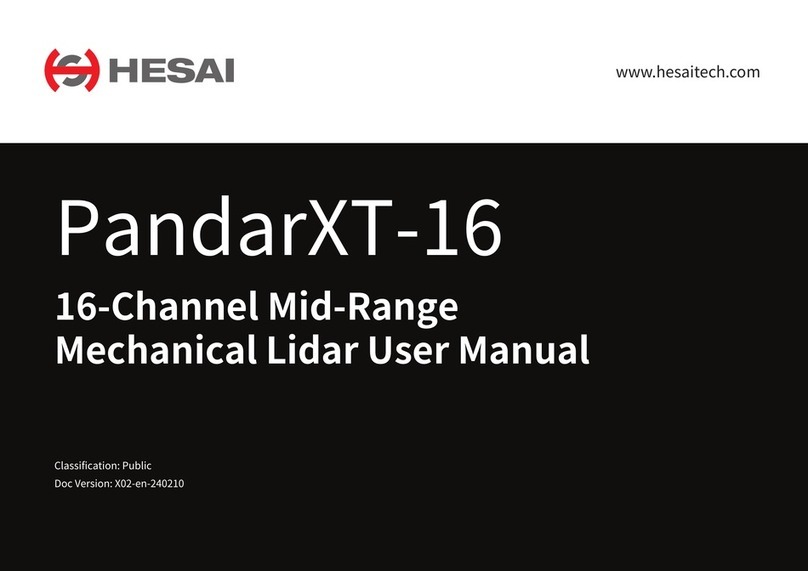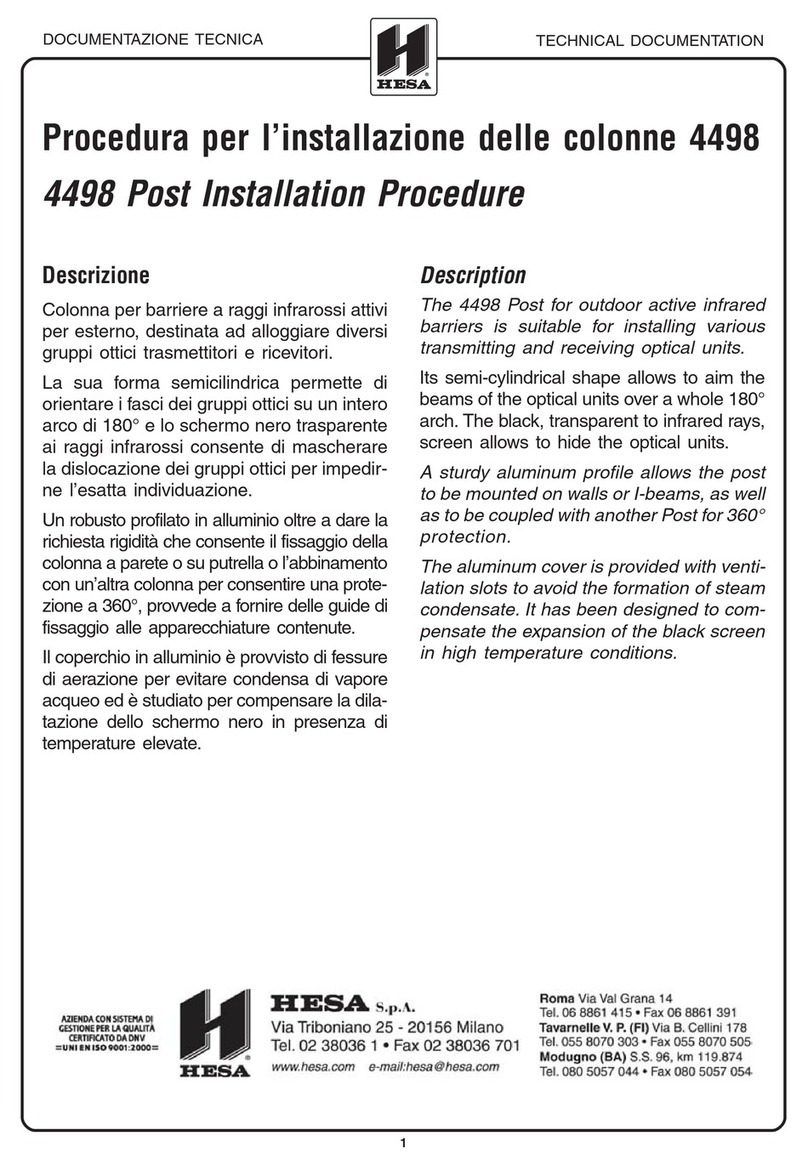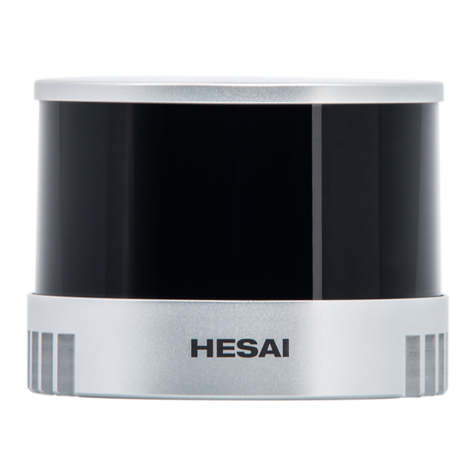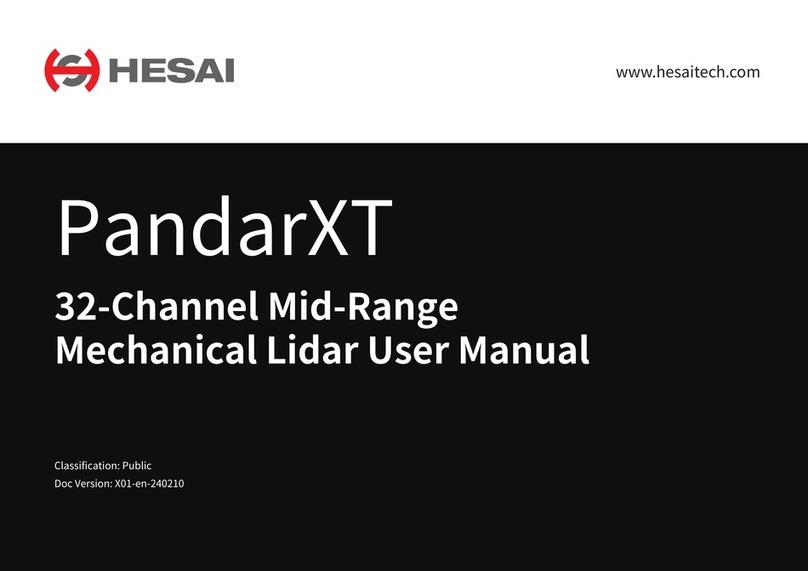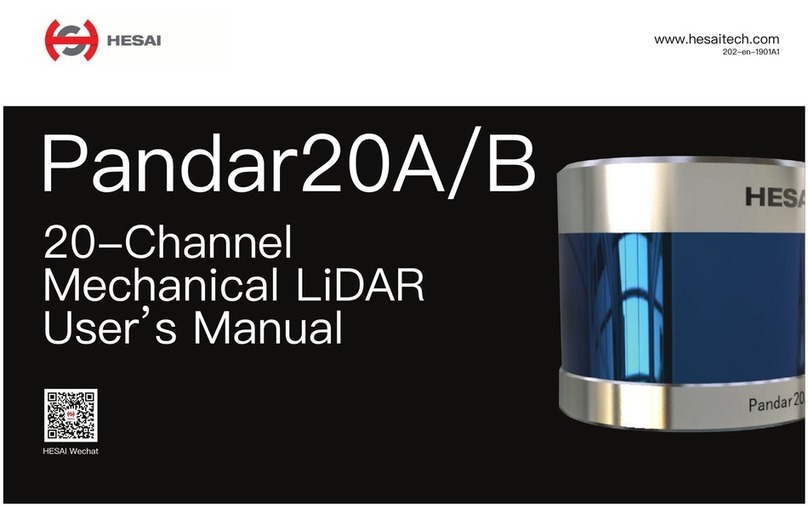Contents
Safety Notice.............................................................................................. 1
1Introduction........................................................................................... 4
1.1 Operating Principle........................................................................ 4
1.2 LiDAR Structure .............................................................................. 5
1.3 Channel Distribution...................................................................... 6
1.4 Specifications................................................................................. 7
2Setup...................................................................................................... 8
2.1 Mechanical Installation.................................................................. 8
2.2 Interfaces ...................................................................................... 12
2.3 Connection Box (Optional) .......................................................... 14
2.4 Get Ready to Use .......................................................................... 18
3Data Structure...................................................................................... 19
3.1 Point Cloud Data Packet .............................................................. 20
3.2 GPS Data Packet........................................................................... 25
4Web Control ......................................................................................... 31
4.1 Home ............................................................................................ 32
4.2 Settings......................................................................................... 33
4.3 Azimuth FOV ................................................................................. 36
4.4 Operation Statistics......................................................................39
4.5 Upgrade ........................................................................................40
5PandarView.......................................................................................... 42
5.1 Installation....................................................................................42
5.2 Use.................................................................................................43
5.3 Features ........................................................................................46
6Communication Protocol .................................................................... 51
7Sensor Maintenance ............................................................................ 52
8Troubleshooting .................................................................................. 54
Appendix I Channel Distribution ............................................................. 56
Appendix II Absolute Time and Laser Firing Time ................................... 61
Appendix III PTP Protocol........................................................................ 65
Appendix IV Phoenix Contact .................................................................. 67
Appendix V Nonlinear Reflectivity Mapping ............................................ 68
Appendix VI Certification Info.................................................................. 73
Appendix VII Support and Contact .......................................................... 74

